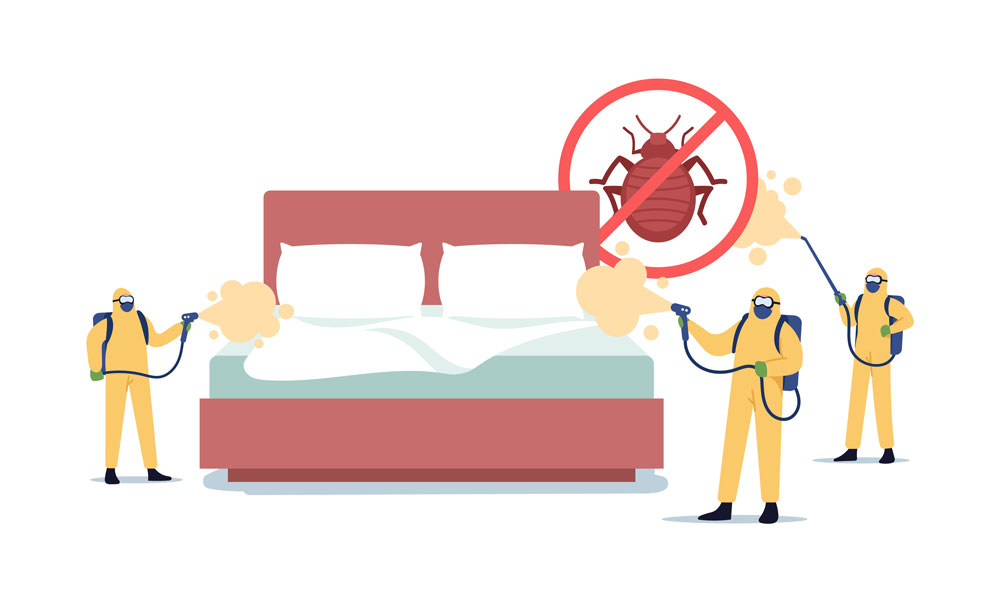Bed Bugs Treatment

Bed bugs are a growing problem in the United States, and we continually get questions from customers on how best to eradicate them. Treating bed bugs can be intense and sometimes requires several treatments, but you can effectively and safely eliminate them from your home and save a substantial sum of money when compared to having a professional treat your home.
Do some investigative work. When looking for bed bugs, pay close attention to where people sit or sleep for long periods of time. Be prepared to inspect all areas using a bright flashlight and a magnifying glass, as bed bugs, eggs and fecal deposits will go unnoticed with just a casual inspection. When conducting your inspection, leave nothing unturned, and no site should be ignored that may be a bed bug harborage. Bed bugs can hide anywhere, so be sure to inspect wall sconces, behind electrical switch plates, behind wall posters, between books and magazines on shelves and in racks. Be prepared to inspect all the places near sleeping areas, which may mean taking the bed frames apart!
Prepare the area. A thorough cleaning of the premises will make control efforts much more effective. Strip all beds down to the bare sleeping surface. Bedding (sheets, blankets, comforters, covers, and shams) should be laundered or professionally cleaned. Personal items (stuffed animals, soft toys, blankets) should be removed and cleaned. Remove clutter from furniture tops and bed stands. Open up the clock radio and phone (that’s right, bed bugs may be hiding in there too!) Tap the open ends into a bag or on sticky tape so the bed bugs can’t jump and hide. Remove clothing from dressers and chests. Use a crack-and-crevice tool to remove bed bugs from deep harborage in areas such as under baseboards, under carpet edges (pull up along the tack strip), around switch plates (you may have to remove the plate first), from the bed frame, inside box springs, inside furniture and from floor cracks.Use a hand-brush attachment to vacuum mattresses and box springs (especially along seams and folds), upholstered furniture and behind drapes. After vacuuming, remove the bag from the vacuum, tie it tightly, and remove it from the premises. If you have anything that can’t be cleaned, vacuumed or treated, consider freezing it for a week or two or putting it in a dark bag outside for several days where the temperature inside the bag will reach at least 120 degrees.
Attack the bed bugs where they’re hiding. Using a bed bug killer dust product, treat all of the perimeter walls/voids of the infested room first. This is accomplished by removing the switch plates and wall fixtures to gain access between the walls where bed bugs like to hide. If it is possible to gain access underneath the baseboards so no dust will remain in the living space, inject dust under the baseboards using a hand duster for safer and easy application. TIP: Treat perimeter wall voids on adjacent rooms first. This will prevent the bugs from escaping out the other side into rooms that are not infested.Dust may also be applied more easily along baseboards by pulling the carpet up from the tack strip and then putting it back into place. DO NOT spread dust over the carpets or under the carpets. Dusts are only for use in cracks and crevices, wall voids and under baseboards, not where people or animals are.
Pestop has liquid insecticides available that provide quick knock-down and long residual control of bed bugs with low hazard to occupants when applied correctly. Liquid residuals can also be applied as a crack-and-crevice treatment under baseboards.
Another critical step in treating bed bugs is the application of an insect growth regulator. These come in a concentrate or aerosol. It will stop the bed bugs from maturing and reproducing, which will help stop the infestation.
Next, treat the bed. Inspect mattresses, especially around the seams, folds and tufts. If you find something, clean the area with a small brush and treat the mattress with a product formulated for quick knock-down of adults and bed bug eggs .TIP: After treatment of the bedding and after it has dried thoroughly, consider covering the mattress with a plastic or allergy-proof cover which will help prevent reinfestation.
Lastly, treat the furniture (night stand, chests, dressers, couches and chairs). The last step is to do a very thorough crack-and-crevice treatment of the furniture in the room. For wooden furniture pieces, do not miss any cracks. Use a similar treatment as the mattress and box spring. Always turn infested furniture over and treat from the bottom. Look carefully underneath all the legs of the furniture! Some furniture may have hollow metal framing (children’s bunk beds are an example). Treat inside the metal tubing with dusts, aerosols or liquids as discussed in the bedding paragraph above. TIP: Please read the label carefully when applying directly to furniture. You may want to spot treat in an area of the furniture piece that is not visible to make sure no staining occurs.
Finally, follow up. You will need to re-treat within two weeks. Do another thorough inspection, and treat any area where bed bugs are persisting or where they have moved to. If you treated your bedding properly and covered it in plastic, you may just need to retreat spot areas of the room. TIP: Heavy infestations may need more than a second treatment. Be persistent!
For more information on bed bugs, products, or application instructions, visit your nearest Pestop location.

